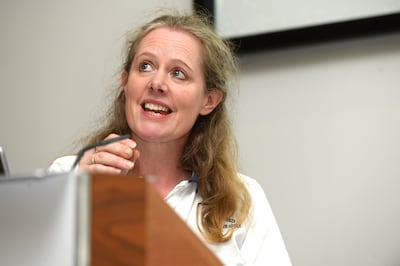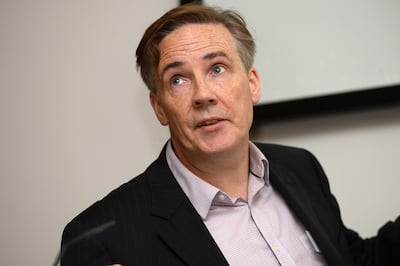Older people across Ireland need to be encouraged and given opportunities to partake in strength and conditioning exercises, according to health professionals speaking about physical activity and older people at an Institute of Public Health conference in Dublin.
"Gentle exercise isn't enough. We need to get the message out there that strong older people fall and get back up while weak older people fall and stay down. Falling isn't the problem. De-conditioning is. Older people need to be strong, steady and straight," says Vanda Cummins, HSE physiotherapist, who works with older people in Dublin.

Cummins says that many older people can be indifferent about exercise. “They can feel that they are old and have worked all their lives so why should they bother. Family members can also be overcautious and fearful about older people falling but you increase your risk of falling when you lose muscle mass by not exercising,” she says.
Rejuvenated
One study of nursing home residents aged 90 and over found that participants in a 12-week targeted exercise programme rejuvenated their muscle strength to that of 10-20 years earlier. Conversely, an older person who spends one week in bed suffers from 10 years of muscle wasting.
“We need to catch people at the points when their muscle strength weakens – so after pregnancy and after the menopause for women and at retirement and after someone has had a fall and then get them back to full activity,” says Cummins.
Physical activity is the best way to improve frailty and frailty is not a reason not to suggest exercise, according to Dr Chris Leggett from the Royal College of General Practitioners in Northern Ireland.
Currently, those who stand to benefit the most are taking part the least with one in two people over 65 not taking enough exercise. And nursing home residents spend between 80 and 90 per cent of their time sitting down. Health professionals suggest carers of older people in their own homes or in nursing homes have a role to play in incorporating more exercise into older people’s lives.
“You have to be careful when you use the word exercise because people think of the gym and park runs but we have to ask older people do they do much walking. Walking makes you feel better and prevents falls,” says Leggett.
Cummins also says that we also need to be careful about the language we use around ageing bodies. “Instead of ‘use it or lose it’, I prefer ‘motion is lotion’ and instead of wear and tear, we should say, ‘wear and repair’. We need to look at exercise for life and build it into an everyday habit, not see it as something that takes extra time.”
Professor Shane O'Mara, professor of experimental brain research at Trinity College Dublin and author of In Praise of Walking: The New Science of How We Walk And Why It's Good For Us (Bodley Head), says that our cities and towns need to be more walkable as our population ages and more and more people live in urban areas. There are currently more than 500,000 people over 65 in Ireland and this will rise to 1.4 million by 2046.

“We know from research that walking boosts mood even in those who expect to feel bad after a walk. And, exercise is one of the best ways to reduce the risk of dementia but we need a charter for human movement to make urban areas safe for people to walk in. And we need urban planners to put pedestrians first when designing roads,” says O’Mara. He recommends the banning of on-street parking, better public transport and longer times to cross the road at pedestrian crossings and traffic lights.
Heart disease
Joe Tierney, lecturer in leisure management at Athlone Institute of Technology, says that the problem is that we've been selling exercise as a negative rather that a positive. "The messages from health professionals speak about the importance of exercise to reduce the risk of heart disease, cancer and diabetes but we should be talking about how older people enjoy physical activities and how sociable it is to exercise with other people," says Tierney, who is studying the motivation of older scuba divers, hill walkers and sea swimmers for his PhD at the Technical University of Dublin.
Another issue is that in spite of the development of many good exercise programmes run by organisations such as Age and Opportunity, Siel Bleu and Local Sports Partnerships, many older people don’t know about such programmes or don’t have access to them. Also, while they exist in some localities, they are non-existent in other areas.
A symposium on how to encourage and empower older people to do daily physical activity was held in Trinity College Dublin on Thursday, October 24th. At that event, a group of older people from Age and Opportunity and E-Seniors discussed the financial, safety and accessibility barriers to physical exercise.
"One way to promote physical exercise is to see it as a valuable way to keep connected to family members and other people of their generation," says Dr Fintan Sheerin, associate professor in intellectual disability nursing at TCD. A new tailored physical activity course and website called My Physical Activity Counts (myphysicalactivitycounts.com) will be available from early November, developed by the international research project, MOVAGE-ACT.
Safe programmes
“Finding the right activity for the right group can be a challenge and instructors need to be well trained to deliver safe exercise programmes. Older people need to be screened and assessed correctly before deciding which exercise is suitable for them,” says Cummins.
Yet, Cummins recommends older people do strength and balance exercises at least three times a week. “And while there is need for careful monitoring, these exercises must become progressively more challenging. We need more funding to run these types of exercise programmes throughout the country. And it will save money in the long run because it will prevent falls and hip fractures in older people,” she adds.
“Exercise is a journey, not a destination. We do not stop exercising because we grow old, we grow old because we stop exercising,” says Cummins.











